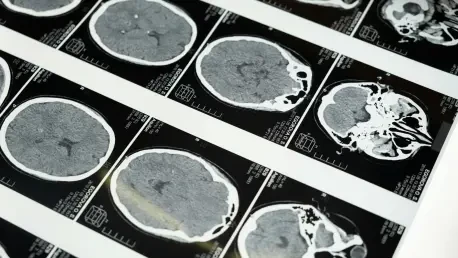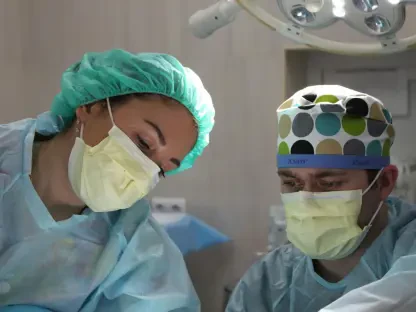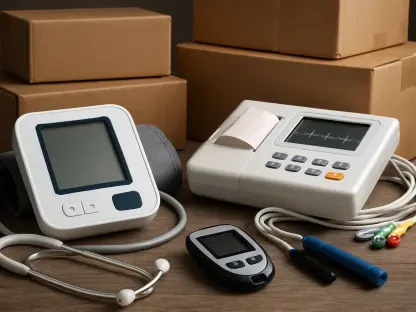In the quest to unravel the complexities of the human brain, researchers often focus on activities associated with alert states, overlooking the intricate workings during rest. Recent groundbreaking studies are redefining this approach, revealing a treasure trove of information encoded in the brain’s resting state. This exploration could potentially illuminate the path to understanding and diagnosing neurological and sleep disorders more effectively. Spearheaded by Dr. Karolina Armonaitė of Kaunas University of Technology, an innovative study delves into how different regions of the cerebral cortex—critical for functions like memory, cognition, and consciousness—behave when the brain is not engaged in active tasks. The research builds upon early 20th-century foundations laid by German neuroscientist Korbinian Brodmann, who identified distinct areas within the cerebral cortex, highlighting its heterogeneous nature. These insights challenge long-standing perceptions, casting resting brain activity not as mere noise but as a dynamic state crucial for decoding various neuro disorders.
Revealing the Resting Brain’s Complexity
Dr. Armonaitė’s research sheds light on the immense value of studying intrinsic brain functions, especially during periods independent of external stimuli. Traditional neuroscience has operated on the assumption that a brain at rest is essentially inactive, but recent findings suggest otherwise. By analyzing the brain’s electrical activities during sleep or passive states, scientists can gain insights into distinct cortical behaviors and consciousness stages. This approach may revolutionize understanding and treatment strategies for neurological conditions, such as schizophrenia, Parkinson’s disease, and Alzheimer’s disease, by identifying specific markers within passive brain states. These markers, appearing as subtle and intricate electrical signals, underscore the notion that rest is not a mere passive state but rather a dynamically active one, playing a crucial role in neural processing.
Utilizing intracranial electroencephalogram (sEEG) recordings, Dr. Armonaitė’s team captured data from 55 patients during neurosurgical procedures. This rare, precise data emanates directly from brain tissue, contrasting with the less accurate scalp recordings typically used. By focusing first on clearly defined sensory, motor, and auditory regions, the study aims to construct a detailed mapping of healthy and abnormal cortical behaviors. The findings suggest that recognizing these intrinsic activities holds the potential to significantly advance diagnostics and therapeutic measures for managing neuro disorders. Developing computational methods to refine cortical parceling based solely on electrical activity could lead to the creation of comprehensive models simulating both healthy and atypical brain states.
Implications for Early Disease Detection
Dr. Armonaitė’s work offers a fresh perspective on diagnosing various neurodegenerative disorders, striving for early detection rather than conventional symptom-based approaches. The research unveils promising pathways for identifying these disorders in their nascent stages, much before noticeable symptoms emerge. This aligns with contemporary endeavors in neuroscience to discover biomarkers corresponding to preclinical phases of conditions such as Alzheimer’s disease. Understanding cerebral dynamics during rest could pioneer new methodologies, allowing interventions well before degenerative symptoms advance irrevocably.
Additionally, the study envisions utilizing digital modeling techniques or ‘digital twins’ of cortical regions. Such simulations provide a platform for theoretical experimentation, predicting neural reactions to specific interventions aimed at alleviating symptoms or correcting dysfunction. These insights are pivotal for personalizing medical treatments, paving the way for customized therapeutic strategies. With digital twins, researchers can forecast the impact of treatments on particular neural structures, potentially optimizing interventions and mitigating adverse effects in practical scenarios.
Innovations in Sleep Disorder Diagnosis and Therapy
The significance of studying brain activity during rest extends beyond neurodegenerative disorders into sleep-related research. Many essential functions occur during sleep, including metabolic cleansing and synaptic reorganization, making resting brain activity invaluable. Dr. Armonaitė’s research highlights how changes in neural activity during sleep could be indicative of incipient neurodegenerative conditions. By interpreting these subtle fluctuations, the study sets a foundation for diagnostic innovations, providing insights into disorders typically undetected until advanced stages.
Although primarily theoretical at this juncture, the study lays the groundwork for future explorations that can transform these ideas into practical applications. Comparisons of detailed healthy brain models against patient data could enable early, pre-symptomatic disorder identifications, potentially revolutionizing current diagnostic methodologies. Such advancements offer crucial insights and reliable markers for crafting intervention pathways, enabling early engagement before significant dysfunction sets in.
Mapping the Cortex: Unlocking New Potential
Dr. Armonaitė’s research highlights the significant importance of analyzing intrinsic brain functions, particularly during times when the brain is not influenced by external stimuli. Traditional neuroscience once assumed that a resting brain was largely inactive, but newer studies propose a different perspective. By examining the brain’s electrical activities during sleep or passive states, researchers uncover unique cortical behaviors and levels of consciousness. This innovative approach could transform the understanding and treatment of neurological disorders like schizophrenia, Parkinson’s, and Alzheimer’s by identifying specific markers in passive brain states. These markers, manifested as delicate and complex electrical signals, reinforce the idea that rest is not simply passive but an active state integral to neuronal processing.
Dr. Armonaitė’s team utilized intracranial electroencephalogram (sEEG) recordings from 55 patients during surgical procedures to gather precise data directly from the brain, offering a more reliable source compared to typical scalp recordings. The work initially focuses on sensory, motor, and auditory regions to create a detailed map of both healthy and abnormal cortical behavior. Recognizing these intrinsic activities could advance diagnostics and treatment for neurological disorders. Computational methods being developed aim to refine cortical mapping based on electrical activity alone, paving the way for models simulating both healthy and atypical brain states.









